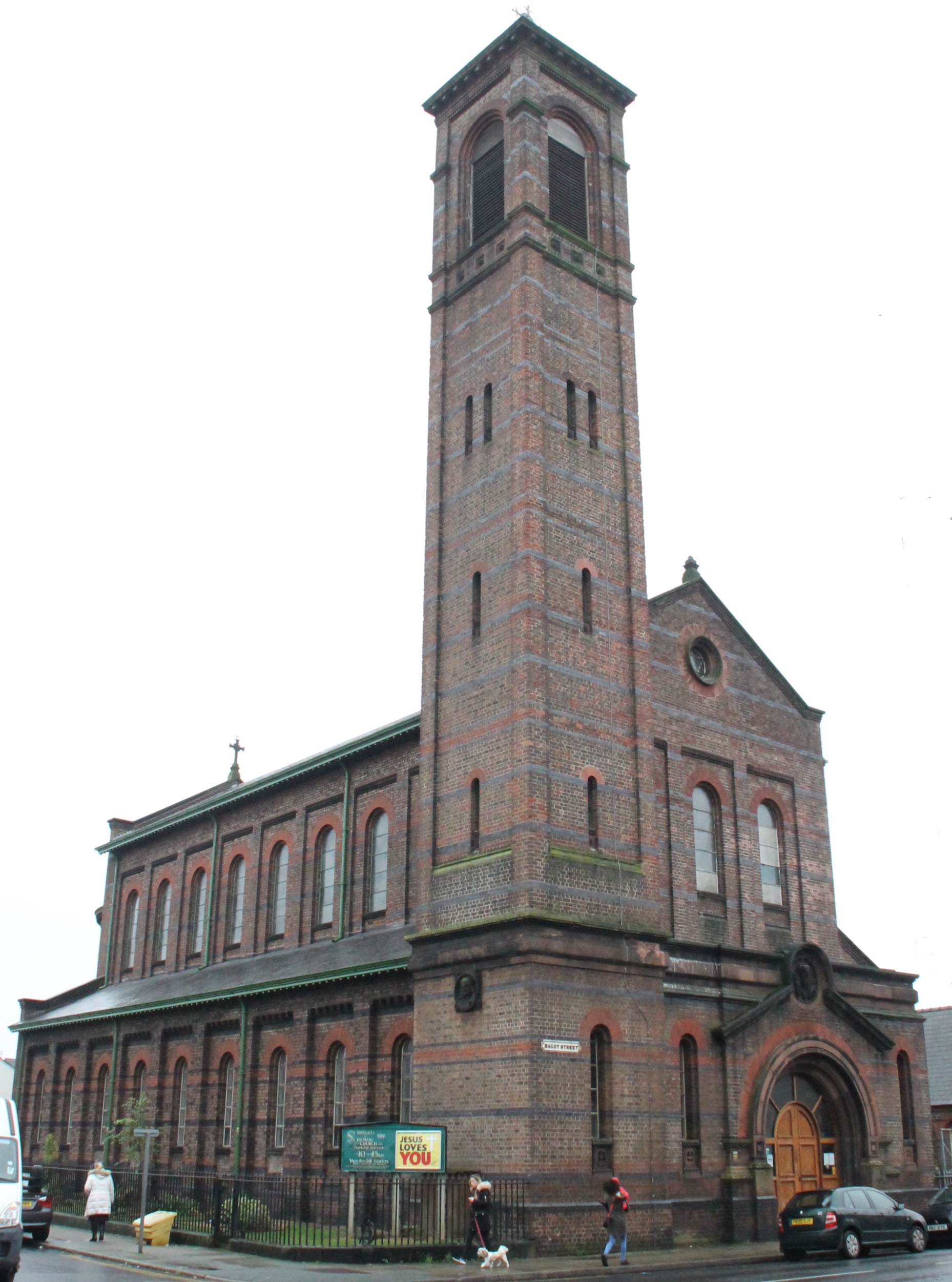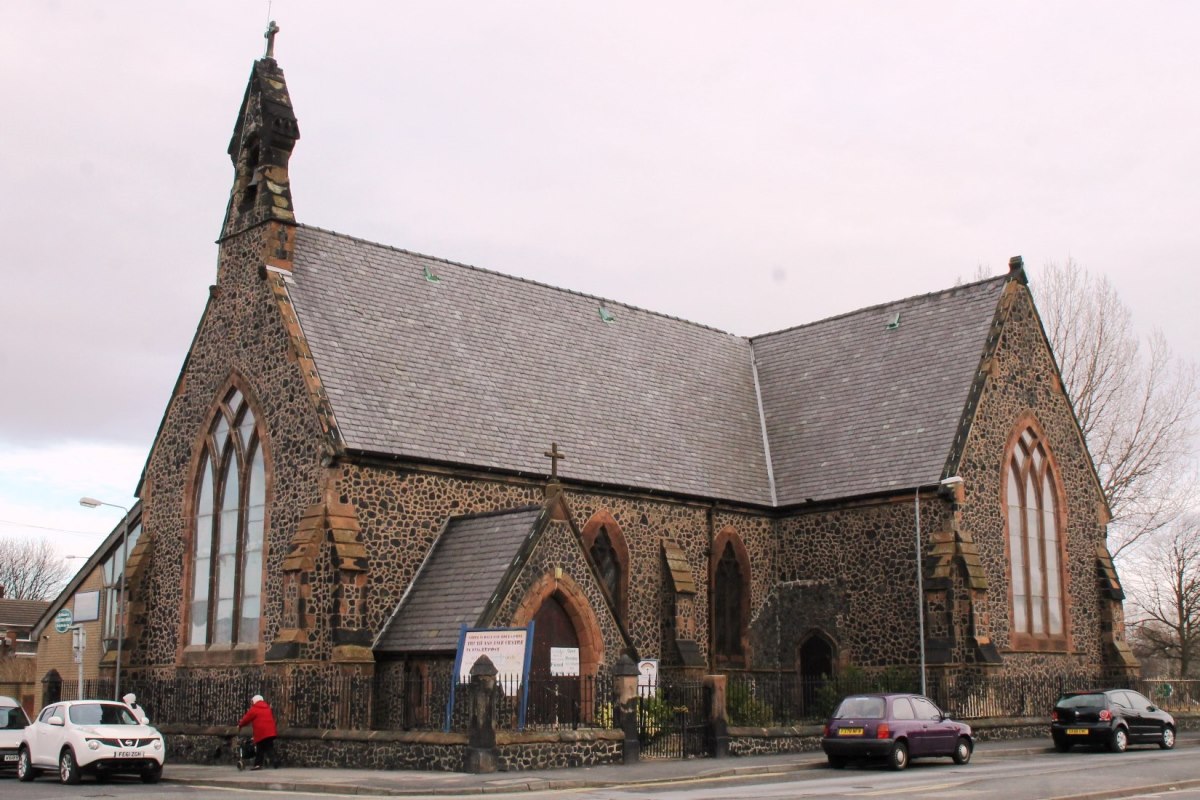
ian-simpson.net | Home | About | Churches |
Transport | Publications | Contact |
I often get asked what my work with churches involves on a day-to-day basis, and the truth is that no two days are ever the same and that there isn't one day that could be said to be representative of all the others. That is how I like it - doing the same thing day in, day out, would drive me to despair in no time! One day I might be delivering hands-on maintenance training, the next I might be 40m up a church spire, talking at a conference, writing a grant application or carrying out some historical research. As a partial answer to the question I'm putting together a selection of my "favourite" projects so far which illustrate aspects of this fascinating work.
Wavertree, St. Bridget & St. Thomas (SBT)
 This is the church in which I was baptised by the late Rev. Peter Pritchard in July 1971. It was here, as a child, that I (inadvertently) launched my first church fundraising project: when it was announced that there was dry rot in the porch I drew a large picture of the church with the words "SAVE OUR CHURCH" above. It was quite a nice drawing but somehow I had got the vertical lines out of true which gave the impression that the church was leaning over about ten degrees and therefore very much on its way towards falling down! The drawing gained pride of place on the church noticeboard and - with or without its help, who can say? - the money was raised and the dry rot was dealt with.
This is the church in which I was baptised by the late Rev. Peter Pritchard in July 1971. It was here, as a child, that I (inadvertently) launched my first church fundraising project: when it was announced that there was dry rot in the porch I drew a large picture of the church with the words "SAVE OUR CHURCH" above. It was quite a nice drawing but somehow I had got the vertical lines out of true which gave the impression that the church was leaning over about ten degrees and therefore very much on its way towards falling down! The drawing gained pride of place on the church noticeboard and - with or without its help, who can say? - the money was raised and the dry rot was dealt with.
Fast forward now to 2014 by which time I was working for the Diocese of Liverpool and the fortunes of SBT's parish - once a decent Working Class community but nowadays hollowed out by grasping private landlords milking the student market for their personal gain - had turned downwards such that it was firmly in the bottom 5% nationally on the Indices of Multiple Deprivation (IMD) scale. The church, under the leadership of Rev. Bill Sanders, had a great heart for serving the community, particularly around helping older people and those with mental health difficulties, but the money required to refurbish the rainwater goods was not there. The beautiful Italianate building was at risk from water ingress as a result. Could I help?
It's not often in my experience that a Conservative government does anything good, but it happened in November 2014 when George Osborne announced the Listed Places of Worship Roof Repair Fund. This offered grants of up to £100,000 towards the repair of roofs and rainwater goods albeit with a hideously tight application timetable of about eight weeks, two of which covered the Christmas and New Year holidays. Working with Architect Peter Williamson, I put together a proposal to refurbish the rainwater goods and wrote an application for £99,500 to the Roof Repair Fund to finance it. The application was successful although for various reasons it was to be 2016 before the work got under way with me acting as Project Manager for the client. Contractor Heritage Conservation & Restoration did an excellent job and the refurbished gutters, hoppers and downspouts should serve the church well for the next three or four decades. In July 2022 SBT celebrated its 150th birthday.
Holy Trinity, Fingerpost, St. Helens
 I first visited Holy Trinity in the 1980s when our School Christian Union organised visits to the church on Thursday evenings to join in the lively midweek praise services led by the late Rev. Chris Woods. By 2013 the church, having undergone a dramatic decline in its fortunes, was facing closure as its small and impoverished congregation could not hope to raise the money necessary to fund urgent repairs. I became part of the Fingerpost Regeneration Project Committee with a brief to find a new vision for the church and raise the £300,000 or so needed to stave off ruinous water ingress.
I first visited Holy Trinity in the 1980s when our School Christian Union organised visits to the church on Thursday evenings to join in the lively midweek praise services led by the late Rev. Chris Woods. By 2013 the church, having undergone a dramatic decline in its fortunes, was facing closure as its small and impoverished congregation could not hope to raise the money necessary to fund urgent repairs. I became part of the Fingerpost Regeneration Project Committee with a brief to find a new vision for the church and raise the £300,000 or so needed to stave off ruinous water ingress.
By this point, the church was the only public building left in a parish which was among the worst 2% in the country for deprivation. There was no way I was going to let the church fail in such a place! Involving the Council's Public Health Department and the local Housing Association in our discussions, we worked up a vision to tackle the area's social ills: rampant poor health, social isolation and digital exclusion. East St. Helens has some of the worst rates for diabetes and some cancers in the UK; part of the reason is the legacy of the mining and chemical industries here but poor diet plays an enormous part too. We brought the NHS "i-Van" into the church car park to carry out screening (which we know led to at least four people receiving diagnoses of potentially-terminal illness at an early stage) and we organised healthy cookery and exercise classes in the church. With an Awards for All grant we installed broadband in the church and bought ten laptops for local people with no access to their own to use - this helped a number of people access benefits and job opportunities which required online access. These activities and others brought people together, fostering a sense of community and tackling loneliness.
In time we were successful with grant applications to the Heritage Lottery Fund, Garfield Weston Foundation, National Churches Trust and others which allowed us to tackle the worst of the roof and stonework defects in 2016. More recently the church has been rebranded "The Mount" referencing both Parr Mount on which it is sited and the Biblical Mount of Olives as part of the Transform North West initiative and has opened its community cafe and garden to the public.
UPDATED November 2022 - All material is © COPYRIGHT Ian Simpson. Note that older material on this or external sites may contain out-of-date contact details for Ian - always use the Contact page on this site to be sure!